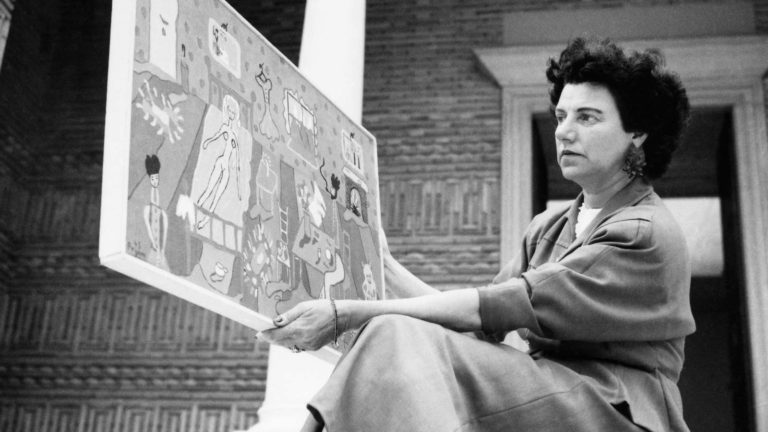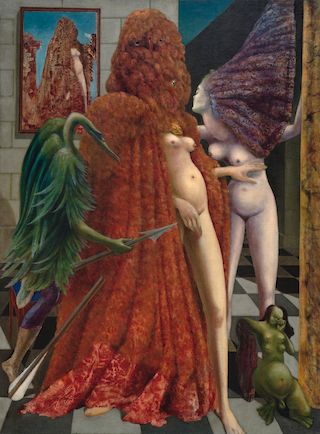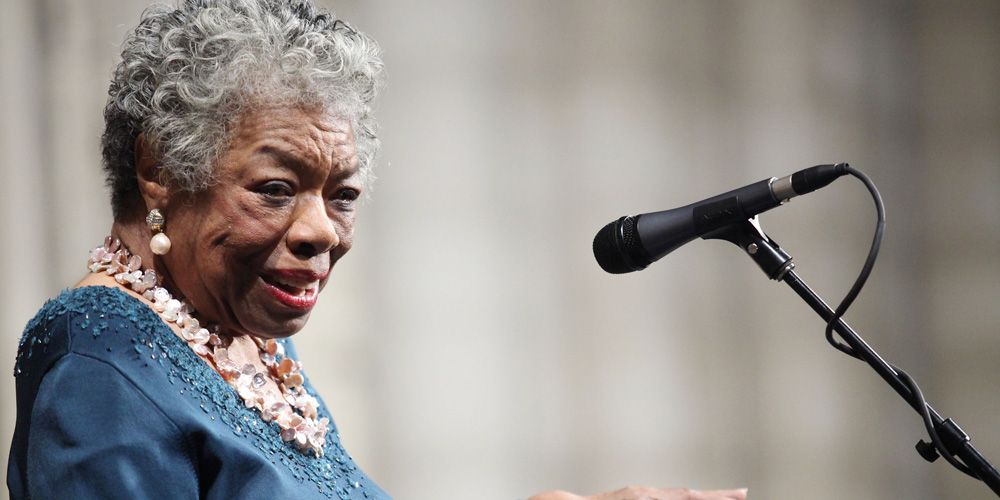
Peggy Guggenheim: Navigating the Avant-Garde – A journey inspiring the modern art collection


Have you ever strolled through an art gallery, soaking in the colors and shapes that artists create? But did you know there are special people called gallerists who help artists share their work with the world?
Galleries are platforms for artists to showcase their talent, express their ideas, and make connections that can shape their careers. It’s a chance for their creativity to shine, and gallerists provide that opportunity. They organize exhibitions, arrange openings, and bring artists and art lovers together to celebrate culture and creativity.
Gallerists are like the unsung heroes of the art world. They bridge an artist’s work and the audience’s appreciation. These remarkable individuals curate spaces that transform mere artworks into profound experiences. Through careful selection and curation, gallerists help artists’ visions find a voice that resonates with diverse viewers.
In the ever-evolving art world, gallerists like Peggy Guggenheim recognize the power of nurturing emerging talent. They invest time, effort, and belief in artists yet to achieve mainstream recognition.
Today we have chosen Peggy Guggenheim, an art gallerist who wasn’t just someone who sold art – her story shows how tough she was,and how she turned her life around. Born into a wealthy family, Peggy could have chosen an easy path. But she was a trailblazer, seeking the thrill of the unknown.
What makes Peggy truly extraordinary is her eye for talent. She spotted artists on the cusp of greatness, even when others couldn’t see it. Artists like Jackson Pollock, Mark Rothko, and more found a platform in her gallery, becoming icons of the art world.
As we learn more about her journey, we find things similar to our lives. This inspires us to be brave and creative in our own stories.
So let’s begin.
Peggy Guggenheim’s early life and the road to gallerist
Peggy Guggenheim was born on August 26, 1898, into a wealthy and influential New York City family. Her father, Benjamin Guggenheim, came from the prominent Guggenheim family, known for their involvement in mining and philanthropy.
Despite her privileged upbringing, Peggy’s childhood was marked by tragedy. Her father died in the sinking of the Titanic in 1912, leaving her with a significant inheritance. Her early years were spent traveling between Europe and the United States, where she was exposed to various cultures, languages, and influences.
Peggy’s education was unconventional for a woman of her time. She attended multiple schools in the U.S. and Europe, which exposed her to different art and intellectual circles. This diverse education sparked her interest in modern art and avant-garde ideas.
In the 1920s, Peggy moved to Paris, a hub of artistic innovation. Here, she encountered the thriving community of writers, artists, and thinkers shaping the modern art movement. She became friends with influential figures such as Marcel Duchamp, Constantin Brâncuși, and Man Ray, who introduced her to groundbreaking art forms like Cubism, Surrealism, and Dadaism.
Peggy’s growing fascination with art led her to establish her first gallery in London in 1938, primarily focusing on contemporary European artists. She also began collecting art more seriously, driven by a desire to support artists and promote new artistic movements. Her gallery became a platform for emerging talents, including Jean Cocteau, Yves Tanguy, and Max Ernst.
With the outbreak of World War II, Peggy returned to the United States, bringing a large part of her art collection with her. She continued her involvement in the art world in New York City and opened the “Art of This Century” gallery in 1942. This groundbreaking gallery showcased various avant-garde art, including Surrealism, Abstract Expressionism, and Kinetic art. It provided a space for artists to experiment and collaborate, contributing to the evolution of modern art.
Peggy Guggenheim’s journey as an an art gallerist
Peggy Guggenheim’s venture into the art world as a gallerist was marked by her unwavering passion for supporting emerging artists and promoting modern art movements. Her journey in this role is a testament to her dedication to artistic expression and her significant impact on art.
In 1938, Peggy opened her first gallery in London, showcasing avant-garde European artists. This gallery was a platform for emerging talents and groundbreaking artistic ideas. Peggy’s Gallery quickly gained attention for its focus on modern art and its support for artists experimenting with new styles and forms.
Some of the famous work found at “Art of this Century”


With the onset of World War II, Peggy returned to New York City, where she continued to nurture her passion for art. In 1942, she opened the “Art of This Century” gallery, which became a landmark in the history of modern art. This gallery was known for its daring exhibitions and role in introducing American audiences to cutting-edge art movements.
It featured Surrealism, Abstract Expressionism, Cubism, and Kinetic art, among others. Peggy’s gallery brought together artists from different backgrounds, encouraging cross-pollination of ideas and fostering collaboration.
One of Peggy’s most significant contributions as a gallerist was her genuine support for artists. She provided a nurturing environment for artists to experiment, take risks, and push the boundaries of their creativity. She often offered financial support, studio space, and resources to help artists realize their visions.
Peggy Guggenheim’s “Art of This Century” played a pivotal role in introducing Abstract Expressionism to a broader audience. She exhibited works by influential artists like Jackson Pollock, Mark Rothko, and Clyfford Still, contributing to the movement’s recognition as a defining force in modern art.
Peggy Guggenheim’s journey as an art gallerist was marked by her dedication to championing artists pushing the boundaries of artistic expression. Her galleries provided crucial platforms for artists to showcase their work, experiment with new ideas, and contribute to the evolution of modern art.
Overcoming obstacles: Challenges and trials that transformed her
Peggy Guggenheim’s life was an inspiring tale of triumph against all odds. Her journey was far from smooth, from the heart-wrenching loss of her father in the Titanic disaster to grappling with financial constraints. As a woman striving to thrive in a male-dominated realm, Peggy faced the harsh realities of gender discrimination as she ventured into the art world. The eruption of World War II brought upheaval, forcing her to leave behind her beloved Europe and shutter her inaugural London gallery.
Even amidst criticism and controversy, Peggy’s spirit remained unbreakable. With a determined spirit, she championed artists who often stood on the fringes, pushing boundaries and sparking new artistic movements. Her journey was one of navigating through the intricate tapestry of evolving art trends, and she fearlessly took risks, leaving an indelible mark on the modern art landscape.
Her legacy lives on as a beacon of inspiration, a trailblazer who overcame obstacles and transformed them into stepping stones toward a richer, more vibrant world of creativity and artistic expression.
Peggy Guggenheim: Making a big impact in the art world

Peggy Guggenheim’s mark on the art world is strong and lasting. Her influence still affects artists, people who collect art, and those who love it. She had a huge love for modern art and a special skill for finding talented artists, making her a person who changed art in important ways.
One of the most important things about Peggy is how she helped artists. She gave money, organized exhibitions, and even helped artists meet other important people. This made a big difference in their careers, helping them become famous. She’s well-known for helping a style of art called “Abstract Expressionism” become popular.
Peggy’s gallery in New York City, called “Art of This Century,” was like a melting pot of creativity. It was a place where artists could try new things and show their art to the world. She liked all kinds of art, from dream-like paintings to art that moved, and she ensured everyone had a chance.
Her art collection is also very important. It has many artworks that show the time when art was changing a lot. This collection now lives in the Peggy Guggenheim Collection in Venice. It’s like a living memory of the art and artists she cared about.
Peggy Guggenheim’s impact is still strong today. She inspires us to support different and daring ideas in art, take chances, and help new artists. Her strong will and how she followed her passions have left a significant mark on the world of art.
Share Your Thoughts and Discover More
Peggy Guggenheim’s story is like a painting full of courage and creativity. Now, it’s your turn to be a part of this conversation:
What did you learn from Peggy Guggenheim’s life that you can use in your own life? How can you be strong and creative, just like her?
Tell us your ideas, stories, or thoughts in the comments below. Or if you have a story that you wish for us to share, email us at info@artstoheartproject.com Your stories are important and can inspire others.
And if you’re interested in more inspiring stories from the art world, remember to explore our Art History section. You’ll find more stories of women artists, collectors, poets and dreamers who shaped the world with their creativity and determination.
See you next time with another story.

















Comments 9